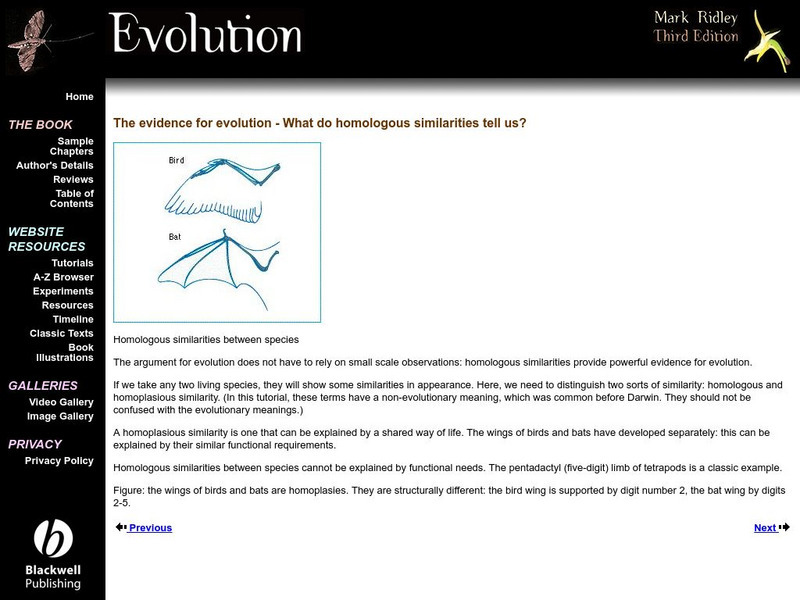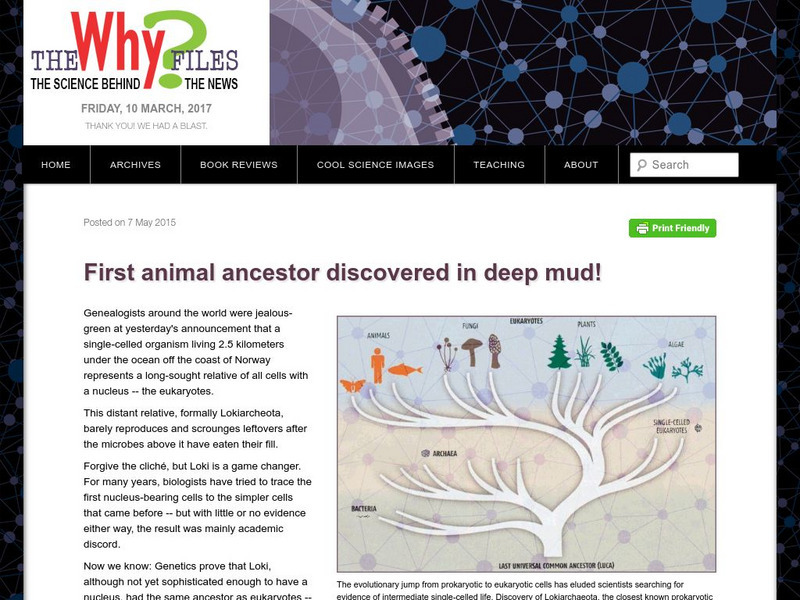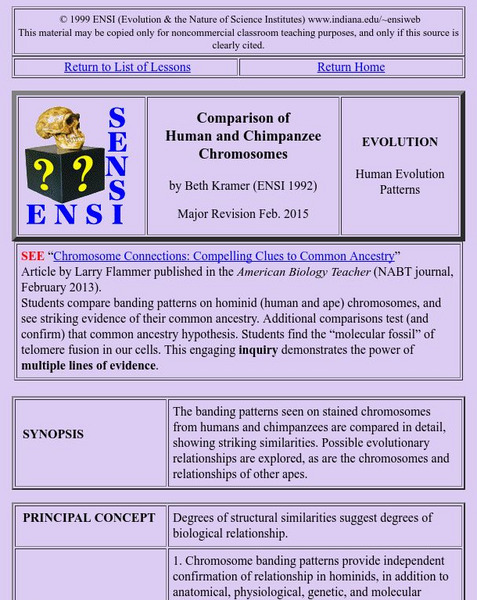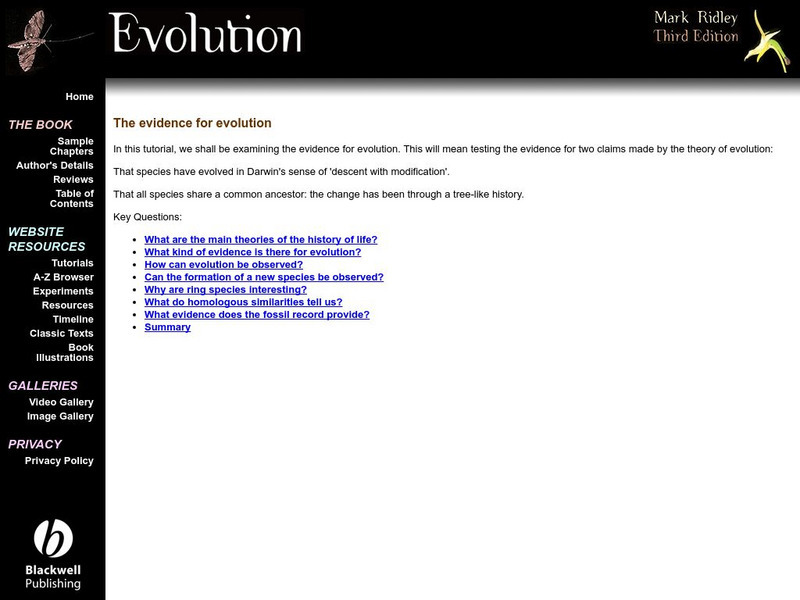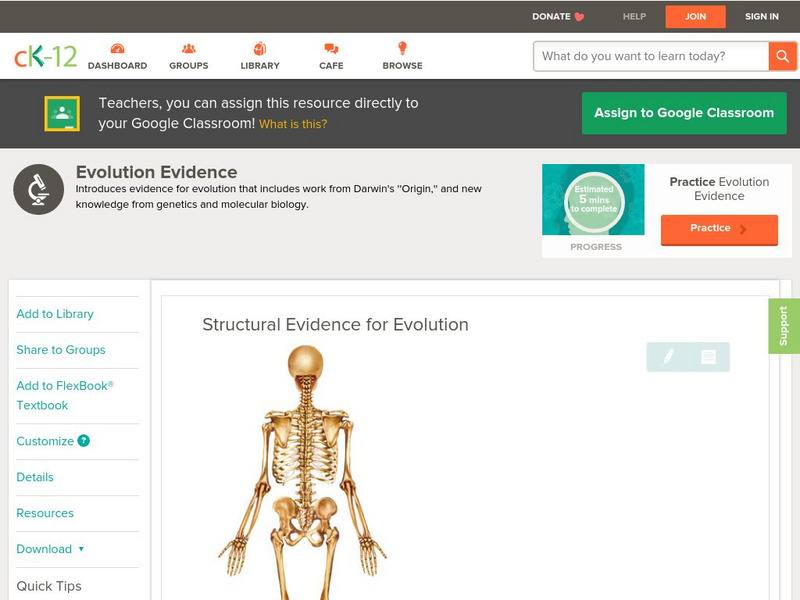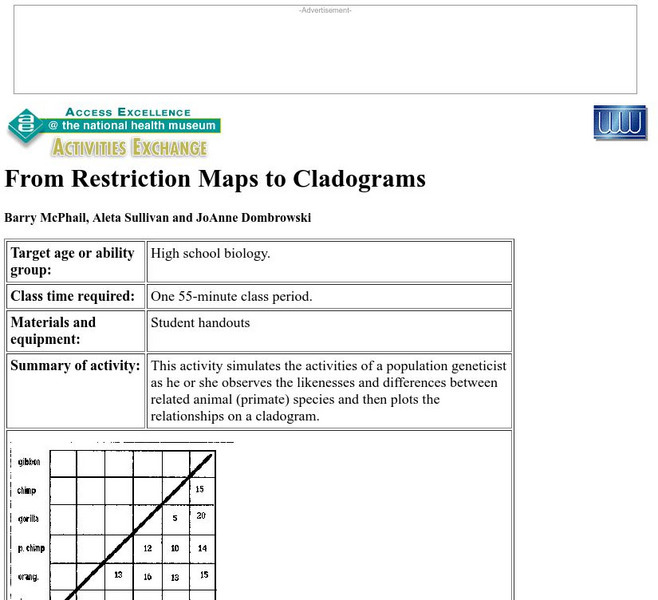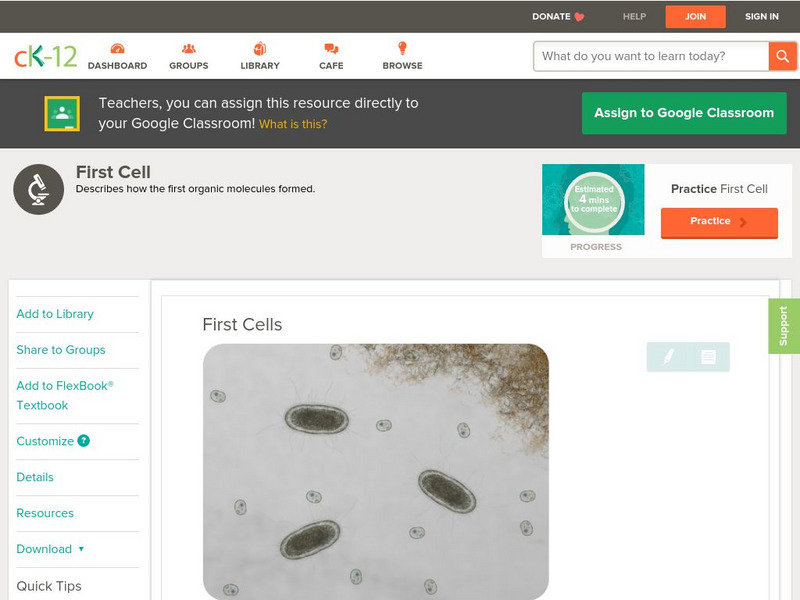Other
The Evidence for Evolution: Homologous Similarities
This site is a section part of a website that accompanies "Evolution," a textbook by Mark Ridley. Here he covers homologous structures, using them as evidence for evolution.
University of Wisconsin
The Why Files: First Animal Ancestor Discovered in Deep Mud
Two billion years ago, we share a common ancestor with this new-found relative. Is this our origin?
Other
Evidence for Evolution: Genetic Code
These pages are part of a site called Evolution that accompany a textbook by the same name. Mark Ridley is the author. In this section: the universal genetic code provides evidence that life has a common ancestor.
Mocomi & Anibrain Digital Technologies
Mocomi: The Theory of Evolution
This slideshow provides a brief overview of Charles Darwin and his theory of evolution, natural selection and survival of the fittest.
University of California
Understanding Evolution: The Big Issues
Visit some of the biggest questions that scientists try to answer about evolution.
Indiana University
Ensi: Comparison of Human: Chimpanzee Chromosomes Lesson
This is a great lesson plan that combines Karoytypes and evolution. Young scholars will recognize that the chromosomes of chimpanzees and humans are remarkably similar, then correlate that to their evolutionary relationship.
Cold Spring Harbor Laboratory
Dna From the Beginning: Living Things Share Common Genes
This multimedia article includes animations, pictures, video, biographical information, and quiz questions that are accessed by clicking on buttons along the bottom of the page. Here you can see how common genes are evidence for common...
Other
Evolution: Evidence From Living Organisms
By examining fossils, scientists have collected evidence that supports the theory that species changed over time. As you read this article, study this evidence and critically evaluate whether it indicates that species may have arisen by...
Other
The Evidence for Evolution
These pages are part of a site called "Evolution," that accompanies a textbook by the same name. Mark Ridley is the author, and in this section he discusses the evidence for evolution.
National Health Museum
Nhm: Amino Acid Sequences Show Evolution
This lesson plan focuses on differences in the amino acid sequence of hemoglobin and myoglobin proteins. They use the number of differences to create a phylogenetic tree.
CK-12 Foundation
Ck 12: Life Science: Structural Evidence for Evolution
[Free Registration/Login may be required to access all resource tools.] Even though two different species may not look similar, they may have similar internal structures that suggest they have a common ancestor. That means both evolved...
University of California
University of California Museum of Paleontology: Similarities and Differences
A module explaining how two different organisms can possess similar traits by sharing a common ancestor(homology) or due to convergent evolution(analogy).
University of California
University of California Museum of Paleontology: Homologies
These pages are from the Understanding Evolution website for teachers. They focus on homologous structures that organisms with common ancestors share.
University of California
Understanding Evolution: An Introduction to Evolution
A textbook definition along with an explanation of the scientific theory of evolution.
Northern Arizona University
Northern Arizona University: Embryos and Evolution
In this lesson, students study the embryos of different organisms at three stages of development to look for features that suggest a common ancestry.
Alabama Learning Exchange
Alex: Why Comparative Embryology Matters in the Real World
In this lesson, students compare similarities in the embryos of different organisms to look for features that would indicate common ancestry. They will then investigate how understanding this aspect of evolution has real-world...
Other
Plant and Animal Evolution: Homology
In this informative site, homologous is defined and the wings of birds and bats are compared to clarify the concept.
National Health Museum
Access Excellence: Making a Phylogenetic Tree Lesson Plan
Constructing phylogenetic trees may be a daunting task for students, but this lesson plan is a simulation of what molecular biologists must do to determine relationships. This plan is for students who have a good grasp of DNA structure...
PBS
Pbs News Hour Extra: Scientists Discover Oldest Human Ancestor
Scientists have recently published their research into fossil bones from Ethiopia that they say came from an ancestor common to both humans and chimpanzees. They have named the ancestor Ardipithecus ramidus. In the articles and video,...
National Health Museum
Access Excellence: Molecular Biology/primate Phylogeny
This lesson plan involves comparison of amino acids to create a phylogenetic tree of primates. Young scholars will also use other species information to draw conclusions about evolutionary relationships.
National Health Museum
Nhm: Restriction Maps to Cladograms Lesson
This lesson plan requires young scholars to analyze DNA restriction maps to determine the differences in the sequence for several primates and humans. They then use the information to create a cladogram.
BiologyWise
Biology Wise: Examples of Analogous Structures
Explains that analogous structures are ones that are similar in different organisms yet have no common ancestry. This type of phenomenon occurs with convergent evolution. Includes lots of examples for both animals and plants.
CK-12 Foundation
Ck 12: Biology: First Cells
[Free Registration/Login may be required to access all resource tools.] Describes the first cells and the evolution of photosynthesis and cellular respiration.
CK-12 Foundation
Ck 12: Plix Series: Comparative Anatomy: Comparative Embryology
[Free Registration/Login Required] Match the animals with their embryos and answer questions about their evolutionary ancestry.
